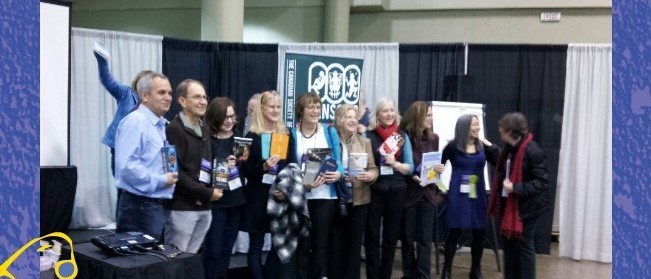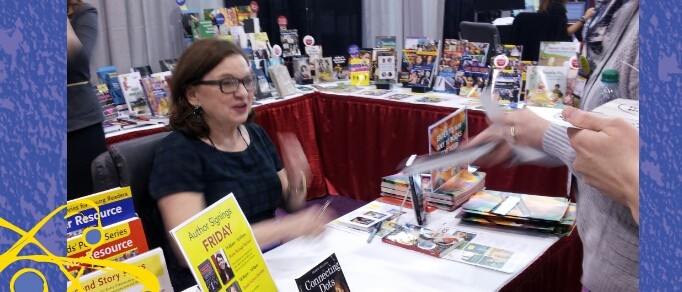Gwynn Scheltema
This unusual picture came through my Facebook feed recently, and I was drawn not just to the semi-circle of mounted women, but to the library sign behind them. Apparently these women were librarians—travelling librarians. It got me thinking of the lengths to which people will go to have libraries and access to books.
Have horse will read
The Pack Horse Library Initiative operated in the 1930s during the Great Depression, as part of a program in Kentucky run by the Works Progress Administration. The WPA was the brainchild of U.S. President Franklin Roosevelt to help job seekers during the Great Depression.

Locally known and trusted women rode as much as 120 miles in a week to reach isolated mountain communities. They went in all kinds of weather and traversed difficult terrain, sometimes even finishing the trip on foot if it was too tough for their horses. Unemployment ended with war production for WWII and the pack horse initiative funding was stopped in 1943.
Walking the plank

On the other side of the world in Indonesia, the environment can’t stop readers getting access to books. In this fishing village, the “library” is a tin hut on stilts, whose only access is a series of wooden planks nailed together in a wobbly path over the water.
Despite its precarious position, the 85 degree heat and 90% humidity, the place is always packed, especially with children.
One man’s trash…

In Turkey’s capital, Ankara, garbage collectors began in 2016 rescuing books destined for the landfill to create a library for employees and family. The project mushroomed, and the local government got behind the idea and supplied a disused brick factory building at its sanitation department headquarters.

The “new” library opened to the public in September 2017 with over 6,000 fiction and non-fiction books, all gathered from the garbage or donated. It boasts a children’s section, an area dedicated to scientific research books, and some foreign language books. In fact, the library’s collection is now so large that it can loan books to schools, educational programs, and prisons.
Home tongue book refuge
What happens if your home language is not that of the dominant language at your town library? Most libraries have moderate foreign-book sections, but in Quebec City, there is a small library that houses English language books—and it’s not new. The Morrin Centre was built on the site of the old military barracks in 1808. Initially it was Quebec City’s public prison, housing its first prisoners in 1812.

Then in 1868 the Literary and Historical Society of Quebec moved in. Over the years, they have gathered historical Canadian documents, republished rare manuscripts and were instrumental in establishing the National Archives of Canada. Sadly many of the older books are no longer in the collection, but the collection still includes a number of books dating to the 16th century.
In more recent times, they established an English lending library, and also act as Quebec City’s English-language cultural centre and an historical interpretation site. The Society has hosted such greats as Charles Dickens and Emmelyne Pankhurst.
The New Pack Horse Librarians
We may not use pack horses any more, but many will be familiar with—the Bookmobile. (Also known as the Book Van or Travelling Library). Following WWII, vans filled with library books were driven by a librarian to areas that did not have bricks and mortar libraries, to village centres, schools, and sometimes even to individual homes. In the Canadian North, when the road ran out, the service continued by boat.

These days, many large urban centers have bookmobiles, and just like their bricks and mortar partners, they offer more than books. They have library programming, and serve as WIFI hubs. They offer access to computers and printers, movies and video games.
Last word
It seems that when people love books, they will take whatever measures necessary to get them. Ain’t life grand!
























